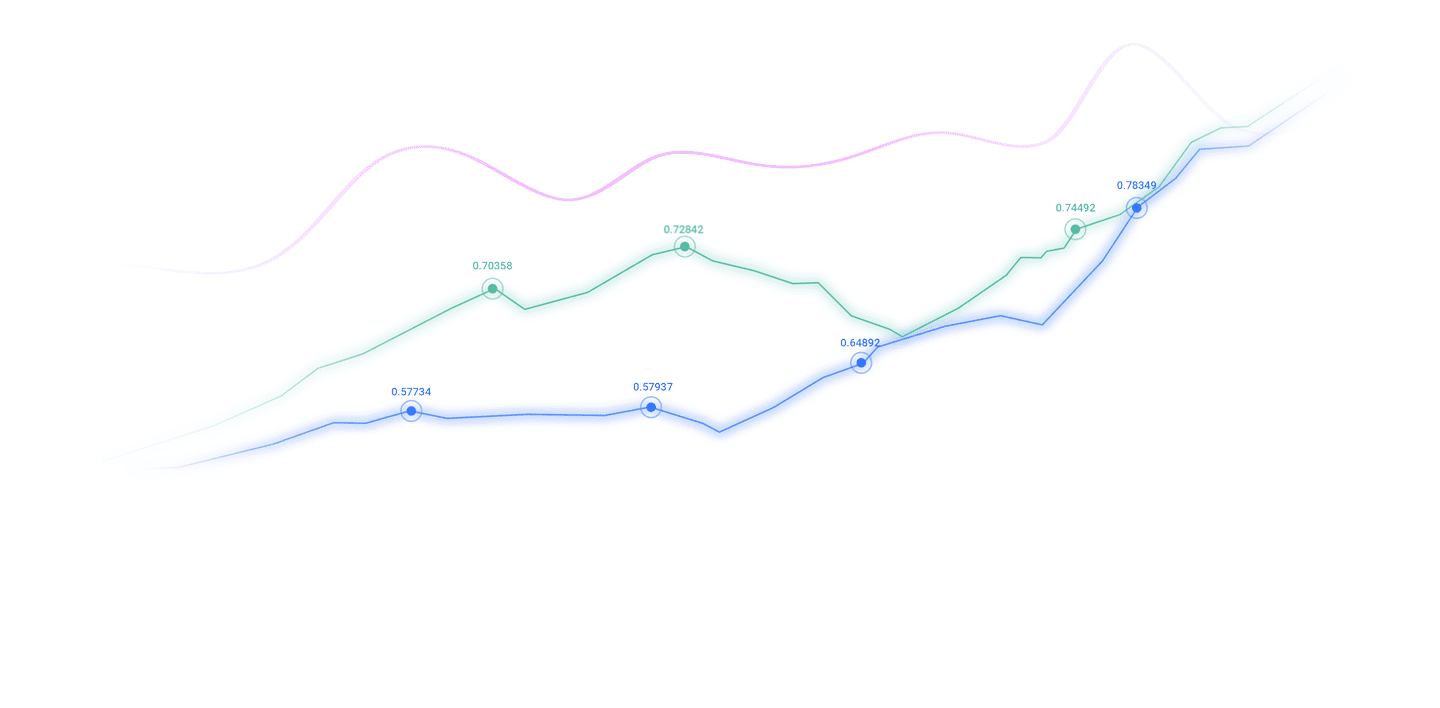Trusted by over 15 Million Traders
The Most Awarded Broker
for a Reason
CATEGORIES
News
- 【XM Decision Analysis】--EUR/USD Forecast: Euro Struggles Below 1.06
- 【XM Group】--USD/JPY Analysis: Eyes on the 160.00 Peak
- 【XM Market Analysis】--CAC Forecast: CAC Continues to Pressure the Upside – Can I
- 【XM Decision Analysis】--BTC/USD Forecast: Continues to See Buyers on Dips
- 【XM Forex】--EUR/USD Forex Signal: Pressured Ahead of US Inflation Data
market news
The delay in the UK budget caused market panic, analysis of short-term trends of spot gold, silver, crude oil and foreign exchange on September 3
Wonderful introduction:
Since ancient times, there have been joys and sorrows, and since ancient times, there have been sorrowful moon and songs. But we never understood it, and we thought everything was just a distant memory. Because there is no real experience, there is no deep feeling in the heart.
Hello everyone, today XM Foreign Exchange will bring you "[XM Foreign Exchange Decision Analysis]: The delay in the UK budget caused market panic, and the short-term trend analysis of spot gold, silver, crude oil and foreign exchange on September 3". Hope it will be helpful to you! The original content is as follows:
Global Market Review
1. European and American market conditions
The three major U.S. stock index futures rose and fell mixed, Dow futures fell 0.05%, S&P 500 futures rose 0.39%, and Nasdaq futures rose 0.62%. The German DAX index rose 0.64%, the UK FTSE 100 index rose 0.52%, the French CAC40 index rose 0.90%, and the European Stoke 50 index rose 0.82%.
2. Interpretation of market news
The delay of the UK budget has caused market panic, and the yield on treasury bonds faces a new round of challenges
⑴ British Chancellor Rachel Reeves announced that the autumn budget will be announced on November 26, and this delay may cause disturbance to the UK Treasury bond market. ⑵ Institutional analysts pointed out that the bond market may panic and trigger speculation about tax increases. ⑶ However, if the extension can bring about a favorable budget that does not contain "tax increase measures to curb growth", the market may welcome this, and any selling may be temporary by then. ⑷ London Stock Exchange Group data showed that the 10-year UK Treasury yield fell to 4.782% after climbing to a seven-and-a-half-month high of 4.858% earlier on Wednesday. ⑸ This fluctuation shows that until the final details of the fiscal budget are released, the UK Treasury market will remain highly sensitive and investor sentiment will influence its short-term trend.
The "Sky" bond issuance season is www.xmniubi.coming! Eurozone Treasury bond yield fluctuates at a high level, and the fiscal prospects of many countries have caused concerns
⑴ Entering September, the eurozone long-term Treasury bond yield fluctuates near historical highs, and the market can be debt to governmentsConcerns about continuous and huge issuance of bonds continue to heat up. ⑵ German 30-year government bond yield rose to a 14-year high of 3.4340% and then fell back to 3.3979%. ⑶France and Italy's long-term government bond yields also followed Germany, falling slightly to 4.49% and 4.65% respectively. ⑷ Institutions expect more than 100 billion euros in bond issuance in Europe in September and October, which has exacerbated market supply concerns. ⑸ In addition, political risks have become an important factor affecting the market. The French government faces a vote of distrust, while the yield on the UK's 30-year Treasury bond has risen to its highest level since 1998 due to concerns about fiscal control. ⑹In this context, investors are closely watching the upcoming U.S. labor market data that will have a significant impact on the Fed's expectations for a rate cut this month. ⑺The market currently expects the Fed to cut interest rates by 25 basis points this month to be more than 90%.
U.S. mortgage rates fell to new lows since April
⑴ As of the week ending August 29, the average contract interest rate for 30-year fixed-rate mortgages in the United States fell to 6.64% from the previous value of 6.69%. ⑵The interest rate hit a new low in the past five months, but is still higher than 6.43% in the same period last year.
Latvia's industrial output growth rate in July hit a new high since 2021
⑴Latvia's industrial output increased by 9.8% year-on-year in July, further accelerating from the previous value of 7.2%. ⑵ This is the strongest growth since May 2021, mainly due to a significant increase in manufacturing output growth (10.8% vs. 7% in June). ⑶ The shrinkage of the mining and quarrying industry narrowed (-18.4% vs-21.1%). ⑷ The growth rate of electricity and gas supply output slowed down (12.5% vs 19.2%). ⑸ After seasonal adjustment, industrial output in July increased by 1.5% month-on-month, the highest level since January this year, with the previous increase of 0.5%.
South Africa's third-quarter business confidence index hit a new low in one year
⑴ South Africa's RMB/BER business confidence index fell from the previous value of 40 to 39, hitting a new low since the third quarter of 2024. ⑵ The long-term average of the index is 42 and 3 points lower, mainly reflecting www.xmniubi.companies' concerns about the impact of US tariffs. ⑶ US President Trump restarted tariff measures after ending a three-month suspension on August 7, which puts South African www.xmniubi.companies in the reality of an unfavorable trade agreement. ⑷Isaah Mhlanga, chief economist at South Africa's First Rand Bank, said: "Measures such as early procurement, order cancellation and production holidays in the automotive industry have also had an impact on this period of activities." ⑸ The manufacturing confidence index plummeted 10 points to 23, becoming the lowest score against the background of continued global trade uncertainty. ⑹Retailers index fell 10 points to 32, while wholesalers index fell 12 points to 38. ⑺The second quarter data, with weaker confidence indexes in construction contractors and new car dealers, improved.
The number of mortgage applications in the United States fell for the third consecutive week
⑴ Data from the Mortgage Bankers Association showed that in the week ending August 2, the United StatesThe number of mortgage loan applications in China fell by 1.2% month-on-month, while the previous value was 0.5%. ⑵This is the third consecutive week of the data showing a downward trend, although the benchmark mortgage rate fell by 5 basis points to a nearly five-month low. ⑶ The number of mortgage applications for new home purchases fell by 1.2%, and the weakening of consumer confidence led to a disruption in growth momentum for four consecutive weeks. ⑷ The number of refinancing applications that are more sensitive to short-term changes in interest rates increased slightly by 0.9%.
"Dove" group is expected to be postponed? The new British Treasury Secretary sets a budget date, and the interest rate cut schedule may be postponed
⑴ The new British Finance Minister Rachel Reeves announced that the annual budget will be announced on November 26. ⑵ This date is set after the Bank of England's monetary policy meeting on November 6, meaning that the Bank of England may have to wait for the details of the fiscal budget to decide the next step of interest rate action. ⑶ Market data shows that investors currently believe that the Bank of England's probability of interest rate cuts in November is 20%, and the probability of interest rate cuts in December is 18%. ⑷ Institutional analysis pointed out that since the Bank of England is unlikely to take action before the fiscal budget is announced, the earliest interest rate cut may be delayed until December. ⑸ Although the determination of the budget date may bring a brief calm to the pound and UK Treasury bonds, the bullish sentiment on the pound against the euro continues. ⑹The setting of this budget date undoubtedly adds another layer of variable to the already uncertain prospects of the UK monetary policy.
The market is "oversupply"? Asian fuel oil structure weakened, and spot trading of high-sulfur oil surged
⑴ On Wednesday, the market structure of major fuel oil varieties in Asia weakened due to intensified market selling. ⑵ The spot premium of ultra-low sulfur fuel oil (VLSFO) narrowed, while the structure of 380-cst high sulfur fuel oil (HSFO) was converted to spot discount. ⑶ Institutional data show that the VLSFO crack spread closed at a premium of about $8 per barrel in October, while the 380-cstHSFO crack spread fell to a discount of $5.85 per barrel. ⑷ Market sources said that fuel oil supply is expected to be very sufficient this month, which has led to weak market sentiment. ⑸ Despite the weakening of the market structure, spot trading at 380-cstHSFO was active on Wednesday, with the main buyer being Trafigura. ⑹In addition, Fujairah's heavy fuel oil inventories fell 14.1% to 5.55 million barrels in the week ended September 1. ⑺To sum up, although inventory has declined, the market's expectations for future supply and the weakening of cracked price spreads together constitute the downward pressure of the current Asian fuel oil market.
The prophecy of "Doctor Doomsday" www.xmniubi.comes true? The yield on the US Treasury is approaching 5%, and the "alert" of the global bond market is heard again
⑴ Anxiety in the global long-term bond market continues, and the US 30-year Treasury yield has hit the 5% mark for the first time since mid-July. ⑵ Long-term Treasury bond yields have soared, among which Japan's 30-year Treasury bond yield hit a record high, Germany's 30-year yield hit a 14-year high, and the UK's 30-year Treasury bond yield reached its highest since 1998.level. ⑶ Investors' concerns about public debt, European budget, and Fed independence have jointly triggered the turmoil in the bond market. ⑷In the stock market, after the S&P 500 fell 0.7%, stock index futures rebounded after Google's parent www.xmniubi.company Alphabet won the case. ⑸ Gold prices continued to hit record highs above $3,500, boosted by geopolitical tensions and turbulence in the bond market. ⑹In addition, some institutions predict that the yen will further rise by 7.4% in the next year and the euro will rise by 2.5%. ⑺ Despite the short-term rebound in the market, the continued upward trend in long-term bond yields suggests that investors remain cautious about future economic outlook and inflation risks.
GDP exceeded expectations, and the RBA Chairman's "eagle" voice was loud! The Australian dollar rebounded strongly, and bulls were ecstatic. Boosted by strong GDP data and hawkish rhetoric from the RBA Chairman, the Australian dollar rebounded to an intraday high of 0.6534 after gaining support against the US dollar below 0.6500. ⑵ Institutional data showed that Australia's GDP grew by 0.6% month-on-month in the second quarter, higher than the expectation of 0.5%, and 1.8% year-on-year. ⑶ RBA Chairman Brock said that if consumers continue to increase spending, the number of interest rate cuts in the future may not be that many times, and this statement was interpreted by the market as a hawkish signal. ⑷ Despite the uncertainty brought about by Trump’s tariff rhetoric, strong economic data support the Australian dollar. ⑸ Investors will next pay attention to the US JOLTS job opening data in July, which will provide guidance for the US dollar trend and affect the subsequent performance of the Australian dollar. The market is turbulent! US Treasury yields soared, OPEC+ production increase is pending, and the global economy faces multiple tests
⑴ The global bond market is facing tremendous pressure, and the US 30-year Treasury yield once hit 5%, due to the increase in government debt supply and concerns about long-term inflation. ⑵With the background of soaring U.S. Treasury yields, bond spreads also fluctuated, with the 2-year/10-year spreads between 61.5 and 63.8 basis points, and the 5-year/30-year spreads between 122.7 and 124.3 basis points. ⑶ At the same time, investors' concerns about political and economic risks are growing, including questions about the legitimacy of Trump's tariff rhetoric, which is seen as an important test of the power struggle between the executive and the judiciary. ⑷The oil market is also facing uncertainty. There are reports that OPEC+ will consider further increasing oil production on Sunday. If production increases become a reality, it will put downward pressure on oil prices. ⑸ The British Chancellor faces pressure to cut spending to improve public finances, and investors believe that simply raising taxes is not enough to solve the problem. ⑹Looking forward, investors will closely monitor U.S. factory orders, job opening data in July, and speeches from Fed officials, which may provide new guidance to the market. ⑺The market volatility may continue, and investors need to remain vigilant and seek diversified investment portfolios to avoid risks.
German mechanical engineering orders rose 4% year-on-year in JulyRegional demand was strong
⑴ German Mechanical Equipment Manufacturing Federation (VDMA) released data saying that Germany's mechanical engineering orders increased by 4% year-on-year in July, of which domestic orders remained the same, while foreign orders increased by 7%. ⑵ Foreign order growth was mainly driven by non-Eurozone demand, with orders in the region rising by 10%, due to the demand for large factories and the low base effect of the same period last year. ⑶ The order volume of eurozone countries in July was the same as the same period last year, and failed to form growth support. ⑷ From the three-month rolling cycle (May to July), the total number of orders increased by 2% year-on-year, of which domestic orders fell by 1%, and foreign orders increased by 3%. ⑸ It is worth noting that during this period, the orders in eurozone countries increased significantly by 14%, becoming the main driving force for foreign order growth. ⑹VDMA chief economist Johannes Gnant said: "Orders overall grew by 2% in the first seven months of this year, and the overall growth momentum is still weak." ⑺ He further pointed out that the uncertainty brought about by former US President Trump's radical tariff policy is one of the influencing factors. ⑻ At the same time, the reform bottlenecks in Germany and Europe have also suppressed investment vitality. ⑼Gnant stressed that the previously promised policy support must be implemented in the next few months to bring substantial relief to the industry.
3. Trends of major currency pairs in the New York Stock Exchange before the New York Stock Exchange
Euro/USD: As of 20:23 Beijing time, the euro/USD rose, now at 1.1653, an increase of 0.11%. Before the New York Stock Exchange, the price of (Euro-USD) fell on the last trading day after it tried to regain yesterday’s losses in today’s early trading and tried to unload some obvious oversold conditions on (RSI), especially when positive signals appear there to hit its EMA50 resistance, which forced the price to fall again.
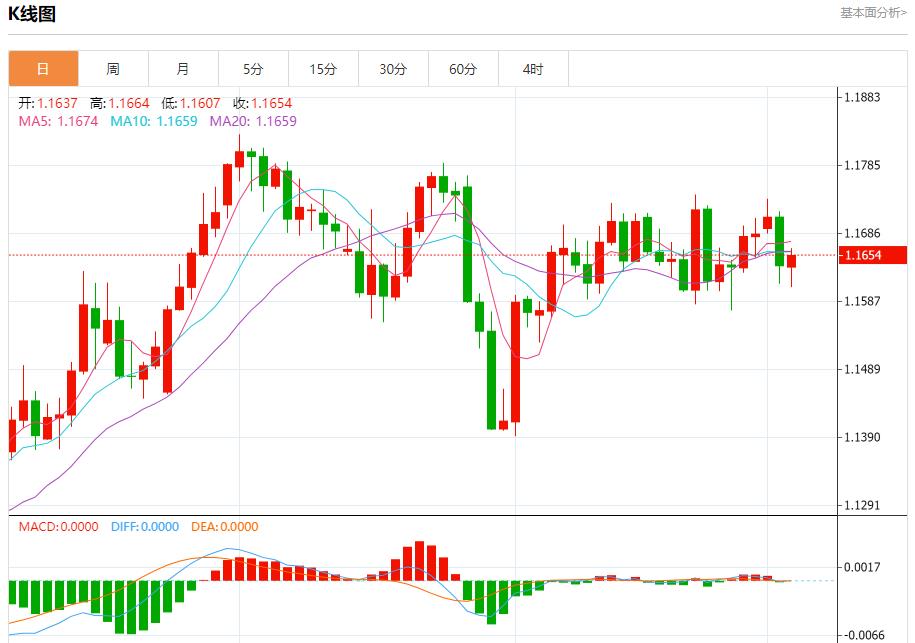
GBP/USD: As of 20:23 Beijing time, GBP/USD rose, now at 1.3414, an increase of 0.17%. Before the New York Stock Exchange, the (GBPUSD) price continued to decline on the last trading day, in addition to stabilizing below the EMA50, and was also affected by breaking the previous short-term bullish trend line, exacerbating the selling pressure and pushing it to break through the key support of 1.3390.
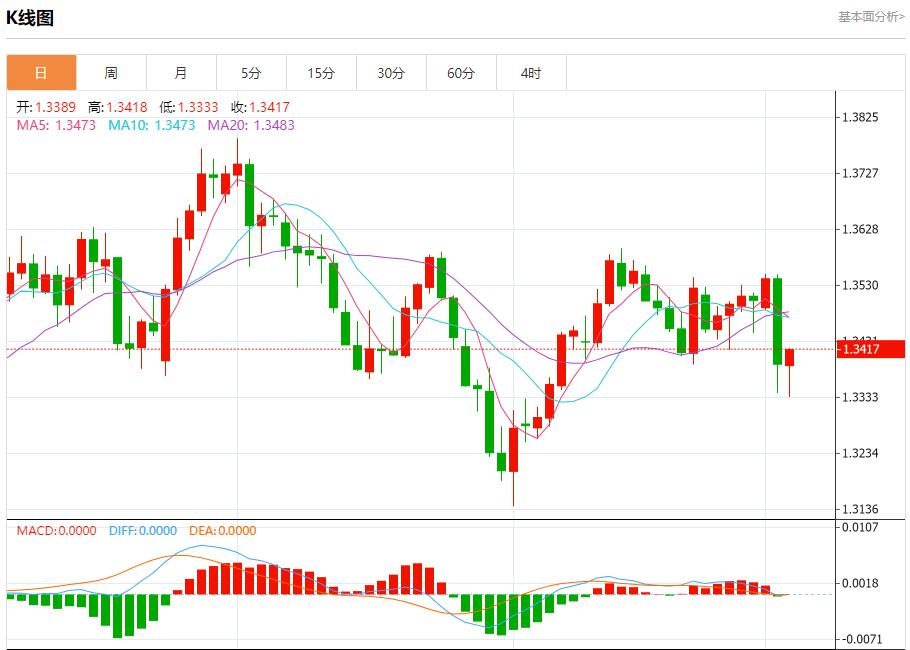
Spot gold: As of 20:23 Beijing time, spot gold rose, now at 3547.32, an increase of 0.39%. Before the New York market, the (gold) price rose on the last trading day, trying to collect the gains from the previous rise, trying to unload some obvious overbought conditions on the (RSI), especially with the emergence of negative signals, the current resistance stabilized at $3,540, which represents the goal of our previous analysis, with the main bullish trend dominant and following supportiveness on the short-term basis of this trackSmall slash trading.
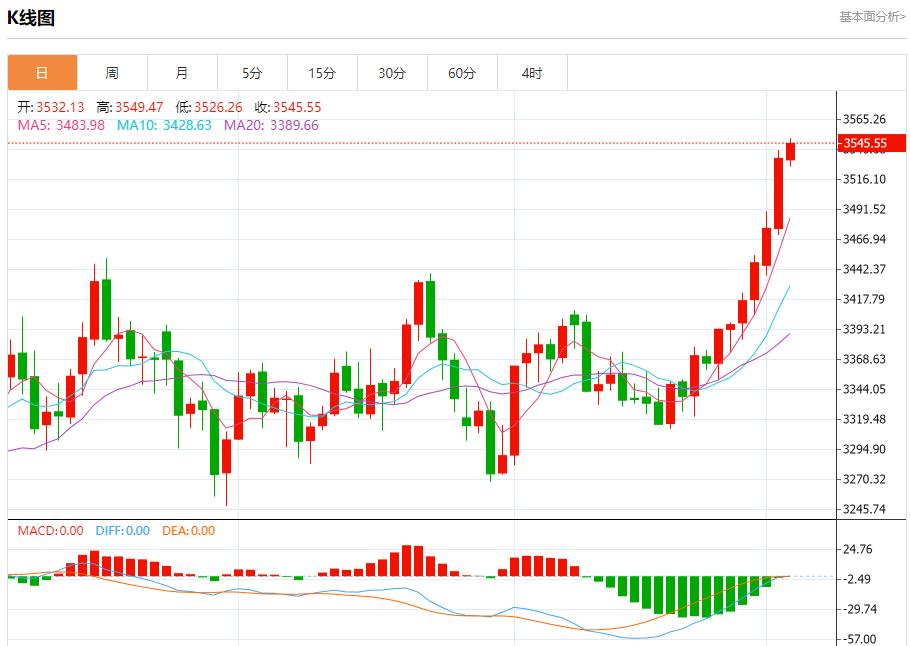
Spot silver: As of 20:23 Beijing time, spot silver rose, now at 40.910, an increase of 0.12%. Before the New York Stock Market, despite negative signals on the (RSI), the (silver) price rose on the last trading day, trying to get rid of some overbought conditions after reaching the overbought level, which canceled its final gains as positive pressure from trading above the EMA50 continues and is dominated by the main bullish trend on a short-term basis and its trading along a supportive small slash.
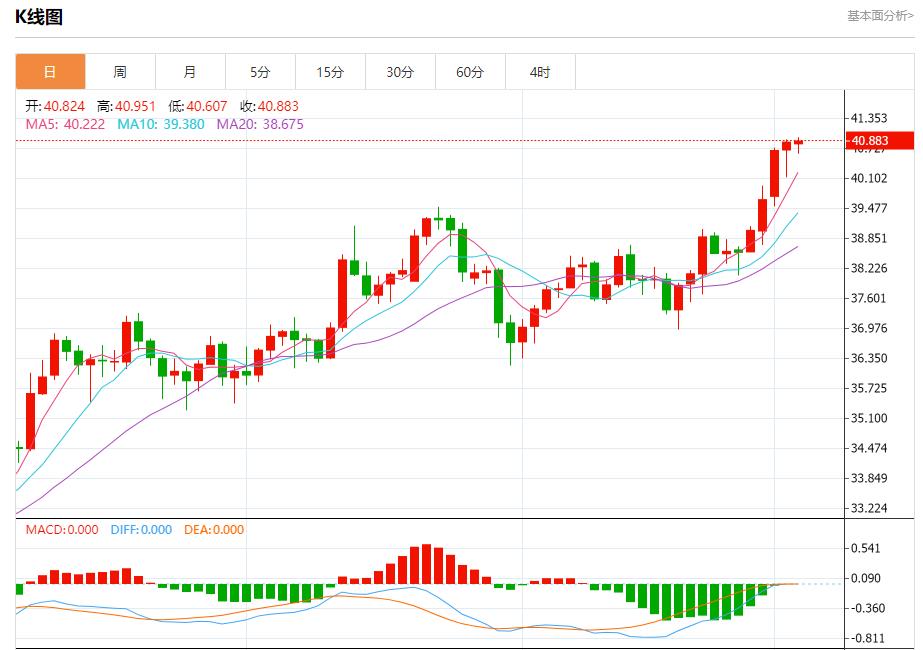
Crude oil market: As of 20:23 Beijing time, U.S. oil fell, now at 64.110, a drop of 2.27%. Before the New York Stock Exchange, the (crude oil) price rose in the last trade, settled above the key resistance of $65.00, confirming that it was broken through and supported by continued trading above the EMA50, and dominated by bullish correction trends on a short-term basis, and supportive slashes.
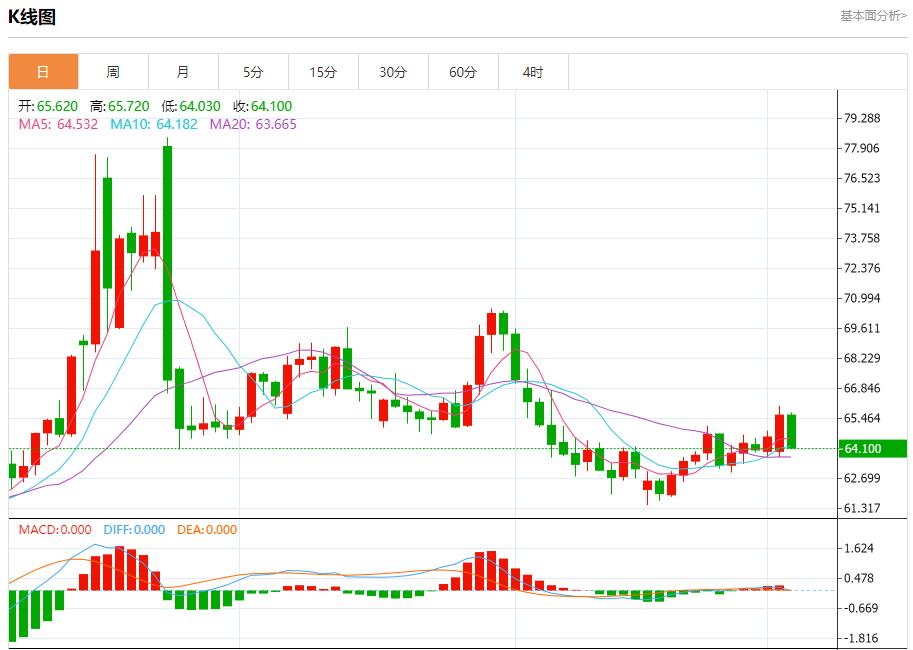
4. Institutional View
Scotiabank: The pound is expected to stabilize and rebound in the short term
Shaun Osborne and Eric Theoret, chief foreign exchange strategist at Scotiabank, pointed out that the turbulence in the UK bond market seems to have eased, but fiscal conditions will still be the key driver of the pound's trend. The market is currently paying close attention to the budget announced on November 26. Judging from the recent price trend, the pound has shown support signals, which are expected to stabilize and rebound - the K-lines on Tuesday and Wednesday both showed a long lower shadow, which is a reflection of this trend. Although the Relative Strength Index (RSI) is still in the bearish range below 50, it is only slightly below 50, and the bearish signal is not strong. We believe that the pound has the potential to rebound to around the 50-day moving average (1.3488); in the short term, the pound/USD is likely to fluctuate between the 1.3350 support and 1.3450 resistance level.
The above content is about "[XM Foreign Exchange Decision Analysis]: The postponement of the UK budget has caused market panic. Analysis of the short-term trends of spot gold, silver, crude oil and foreign exchange on September 3" was carefully www.xmniubi.compiled and edited by the XM Foreign Exchange editor. I hope it will be helpful to your trading! Thanks for the support!
Life in the present, don’t waste your current life in missing the past or looking forward to the future.
Disclaimers: XM Group only provides execution services and access permissions for online trading platforms, and allows individuals to view and/or use the website or the content provided on the website, but has no intention of making any changes or extensions, nor will it change or extend its services and access permissions. All access and usage permissions will be subject to the following terms and conditions: (i) Terms and conditions; (ii) Risk warning; And (iii) a complete disclaimer. Please note that all information provided on the website is for general informational purposes only. In addition, the content of all XM online trading platforms does not constitute, and cannot be used for any unauthorized financial market trading invitations and/or invitations. Financial market transactions pose significant risks to your investment capital.
All materials published on online trading platforms are only intended for educational/informational purposes and do not include or should be considered for financial, investment tax, or trading related consulting and advice, or transaction price records, or any financial product or non invitation related trading offers or invitations.
All content provided by XM and third-party suppliers on this website, including opinions, news, research, analysis, prices, other information, and third-party website links, remains unchanged and is provided as general market commentary rather than investment advice. All materials published on online trading platforms are only for educational/informational purposes and do not include or should be considered as applicable to financial, investment tax, or trading related advice and recommendations, or transaction price records, or any financial product or non invitation related financial offers or invitations. Please ensure that you have read and fully understood the information on XM's non independent investment research tips and risk warnings. For more details, please click here












